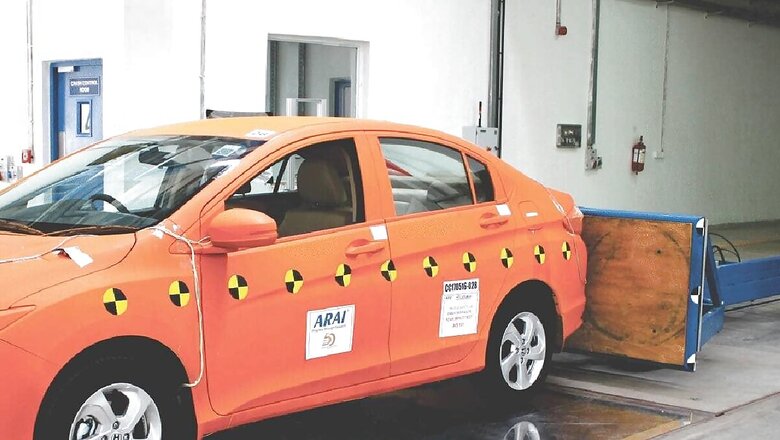
views
In a giant stride towards revolutionising vehicle safety, the Indian government launched the Bharat New Car Assessment Programme (BNCAP) in August last year.
This regulatory body will oversee the important task of evaluating and rating the safety performance of cars. The number of vehicles in India has increased significantly over the past few years.
In parallel, the cases of road accidents have also seen a surge, enabling the need for a dedicated organisation that will focus on improving the safety features of two and four-wheelers. The government has come up with several initiatives, mandating some safety technologies in new and existing models.
In April 2019, the fitment of ABS (Anti-lock Braking System) was made compulsory for all cars with a 125cc or heavier engine. The Indian automakers have been asked to add safety features like front passenger airbags, speed warning systems, seatbelt reminder alarms and rear parking sensors to their new offerings, as reported by The Financial Express.
Despite these mandatory technologies, the Road Transport and Highways Ministry data from 2022 revealed that the second leading cause of death in road accidents was the failure to use safety devices at the right time. Nearly 50,000 bike riders lost their lives for not wearing the helmet while 16,715 people died for not using the seat belts. According to the World Health Organisation (WHO), India recorded the highest number of road fatalities with 11 percent of total deaths in that year.
The Global New Car Assessment Programme (GNCAP) is a global organisation which assesses the safety performance of cars. The Bharat NCAP is based on the recent Global NCAP protocols and shares the majority of its standards and testing processes with it.
The highest level of Adult Occupant Protection (AOP) is one feature that sets the two apart. A vehicle can receive up to 34 AOP points in GNCAP, but Bharat NCAP only rates up to 32 points.
The variation results from the GNCAP giving extra points for seat belt warnings on the front and back seats. Based on AIS 197, the Bharat NCAP also encourages the installation of enhanced emergency braking systems, six airbags, electronic stability control (ESC) and three-point seatbelts for all passengers. The AIS-197 is a set of standardised crash test protocols created for Indian passenger vehicles.
As per the updated Global NCAP standard, the ratings are determined by the vehicle’s performance in frontal-offset, side-impact, and side-pole-impact crash tests. The Bharat NCAP procedure puts cars in a frontal-offset crash test at 64 kph, a side-impact test at 50 kph, and a side-pole-impact test at 29 kph if the manufacturer wants the certain vehicles to get a 4 or 5-star rating.



















Comments
0 comment